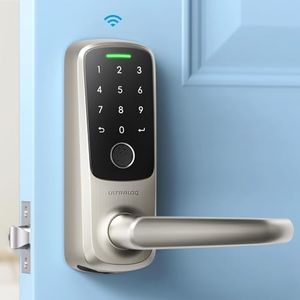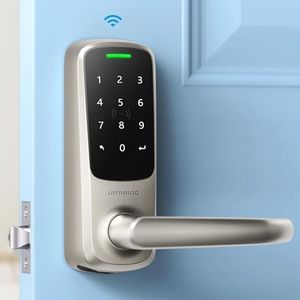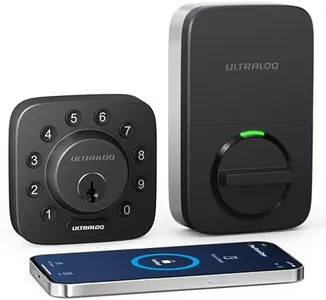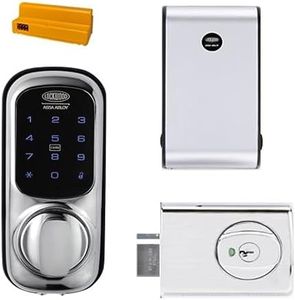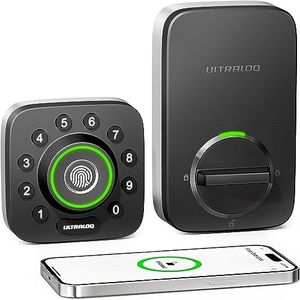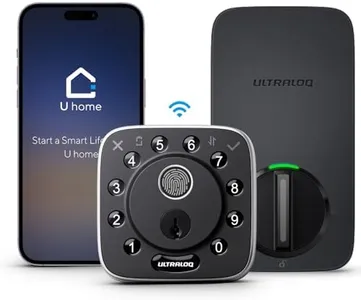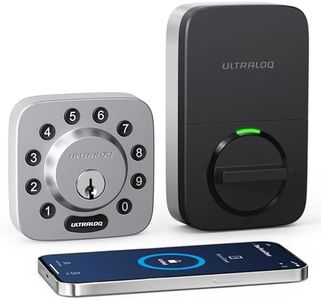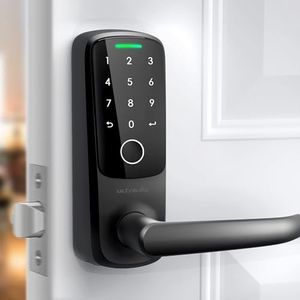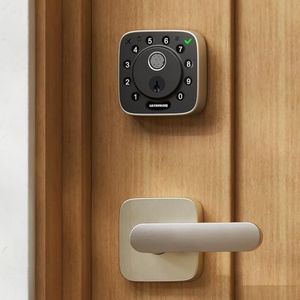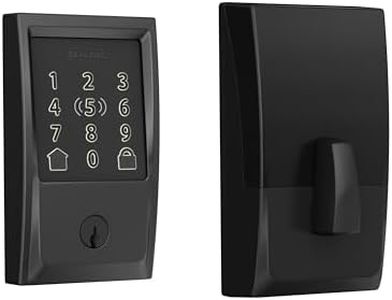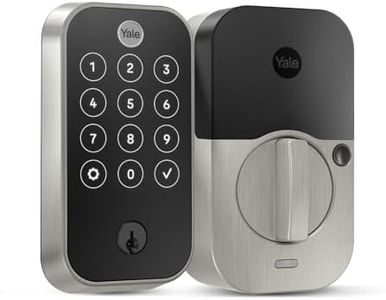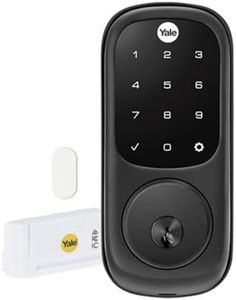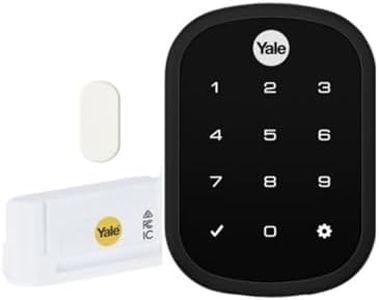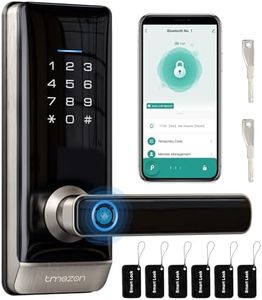We Use CookiesWe use cookies to enhance the security, performance,
functionality and for analytical and promotional activities. By continuing to browse this site you
are agreeing to our privacy policy
10 Best Keypad Door Locks
From leading brands and best sellers available on the web.Buying Guide for the Best Keypad Door Locks
When selecting a keypad door lock, it's important to consider both your security and convenience needs. Keypad locks offer a keyless way to secure your door, making it easier for you and authorized users to enter without traditional keys. However, not all keypad locks are made the same. By focusing on a few important specifications, you can ensure you choose a lock that best fits your daily routine and the level of safety you want.Lock Type (Mechanical vs. Electronic)This refers to whether your keypad lock operates purely with mechanical parts or has electronic components. Mechanical keypad locks don't require batteries or electricity and are often very durable, but may have limited features. Electronic keypad locks offer more functions, like temporary codes and remote programming, but need a power source like batteries. If you want low maintenance, go mechanical. If you prefer smart features and flexibility, go electronic.
Code CapacityCode capacity means how many unique entry codes the lock can support at once. Some locks allow only one code, while others can store dozens. If you'll only need access for yourself or one other person, a single code may be enough. For homes with frequent guests or small businesses needing multiple user codes, pick a lock with higher code capacity.
Weather ResistanceWeather resistance indicates how well the lock can handle exposure to rain, snow, and extreme temperatures. Look for locks rated for outdoor use if you plan to install them on exterior doors. If your lock will be inside or in a sheltered location, weather resistance is less crucial. Choose based on where you plan to install the keypad lock.
Power SourceFor electronic locks, the power source is usually batteries, and some might have low-battery indicators. Some advanced locks offer backup key entry or even solar power. If you want to avoid the hassle of changing batteries, consider mechanical locks or electronic models with battery life indicators and emergency backup options.
Locking Mechanism CompatibilityThis specification means the type of existing door hardware that the keypad can be paired with, such as deadbolts, knob locks, or levers. Some keypad locks are integrated (everything in one unit), while others replace just the locking part. Make sure the lock you pick fits your current door setup to avoid installation headaches.
Ease of InstallationEase of installation reflects how simple it is to put the keypad lock on your door. Some models are designed for do-it-yourself installation with basic tools, while others may need professional help. If you’re comfortable with simple home projects, look for locks labeled as easy to install. Otherwise, consider how much help you might need to get your new lock set up.
Additional FeaturesSome keypad locks offer extra options like one-touch locking, auto-lock timers, temporary codes for guests, or integration with smart home systems. Whether these are important depends on your preferences. For example, if you have regular visitors, temporary codes are useful, while smart integration helps if you're building a connected home.
